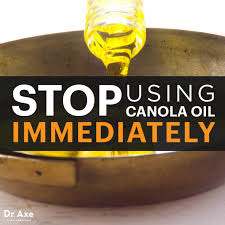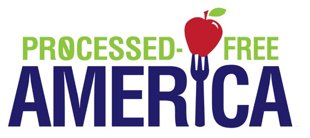It’s been quite a ride watching the rise and demise of trans fats in the American food supply. Needless to say, many of us were gratified last November when the FDA finally acknowledged that these man-made fats are so hazardous to our health, they can no longer be deemed “generally recognized as safe.” Trans fats raise bad cholesterol and have been implicated as the reason for high rates obesity, diabetes, heart disease and cancer. If th

is preliminary determination gets finalized, it will be illegal for food manufacturers to use trans fats in their food products without FDA approval. While this is a great victory for all of us, it may be years before we see a ban and a complete phase-out of trans fats.
But even if there is a ban, you still need to be aware of another hidden source of trans fat in your food products, even the organic foods that are marketed as healthy. This hidden source of trans fats is not likely to be banned or regulated any time soon.
The FDA’s ruling will only cover the man-made partially hydrogenated oils, not the trans fat that is created in the process of pressing and refining oil. According to the FDA, trans fat is also present at very low levels in other edible oils, such as canola oil, where it is “unavoidably produced during the manufacturing process.”
The food industry promotes canola oil (an oil pressed from rape seeds) as a healthy salad and cooking oil, because it contains a relatively high amount of “heart healthy” monounsaturated fat and a lesser percentage of beneficial omega-3 fats in the form of alpha linolenic acid, a type of essential fat known to aid in weight loss, lower the risk of heart disease, and lift depression. Alpha linolenic acid is most certainly healthy, but only if it is protected from heat and light.
Few people realize that the supposedly beneficial omega-3 fats in canola oil are an “unavoidable” source of trans fats. The omega-3 fats in canola oil are extremely fragile and their molecular structure lends for a very easy conversion to trans fats when the oil is exposed to heat during extraction. Standard canola oil goes through two extractions, one mechanical using a screw press that creates high heat, and one chemical using hexane, a very harsh solvent. The oil must also be de-gummed to remove solids that settle during storage. The process involves more heat and sometimes the addition of acids. Then, because the oil is an ugly gray color, it is bleached and separated. Finally, the oil (known for its foul odor) must be deodorized using extreme temperatures as high as 500° F. All of this heat and chemical exposure converts the omega-3’s to trans fats and destroys any health benefit the oil may have had. (To watch a video on how canola oil is made, click here. Notice how the narrator touts canola oil as being healthy, but when you see how it is made you will definitely change your mind!)
Even when the oil is expeller pressed—a type of pressing commonly used in the production of organic canola oil—the tremendous force (as much as 15 tons of pressure per square inch are applied to squeeze the oil from the seeds) of the industrial press still generates a good amount of heat that converts the omega-3’s into trans fats. This conversion happens whether or not the rape seeds were grown organically.
True “cold-pressed” canola oil (made by grinding seeds with heavy granite millstones or modern stainless steel presses and keeping the temperature below 120° F) does exist, and may perhaps be free of trans fats, but is produced in much smaller volume than standard canola oil. You won’t see cold pressed canola oil being used in any commercial food products or restaurants. It is typically only available in specialty food stores at a premium price. However, there would be no point in spending the money on such oil if the intention is to heat it for cooking, as trans fats are easily created at cooking temperatures as well.
What this boils down to is that you end up with a small but very damaging amount of trans fat in canola oil just from the extraction and refining process. If you or any food manufacturer uses canola for cooking, the additional heat creates more damage.
 The amount of trans fat in canola oil varies depending on where it was sourced from. Researchers at the University of Florida at Gainesville found that liquid canola oils pressed from rape seeds grown and sold in the USA contained as much as 4.6 percent trans fat. That may seem like a small percentage, but you have to realize that trans fats act on a cellular level and are harmful even in minute amounts. The National Academy of Sciences declared in 2002, and FDA Commissioner Margaret Hamburg said recently in a written statement, “There is no safe level of consumption of trans fat. Current intake remains a significant public health concern.”
The amount of trans fat in canola oil varies depending on where it was sourced from. Researchers at the University of Florida at Gainesville found that liquid canola oils pressed from rape seeds grown and sold in the USA contained as much as 4.6 percent trans fat. That may seem like a small percentage, but you have to realize that trans fats act on a cellular level and are harmful even in minute amounts. The National Academy of Sciences declared in 2002, and FDA Commissioner Margaret Hamburg said recently in a written statement, “There is no safe level of consumption of trans fat. Current intake remains a significant public health concern.”
The FDA requires food manufacturers to list the number of grams of added artificial trans fats per serving of the food product, however, the trans fats that occur in canola oil as a result of processing are not monitored nor are they required to be listed on the nutrition fact panel of food products. In fact, canola oil is one of the most egregiously hidden sources of trans fat that is not disclosed or regulated. To avoid trans fat in your food, avoid canola oil at all costs, even if is organic and expeller pressed.
Sources:
- Sean O’Keefe, Sara Gaskins-Wright, Virginia Wiley, and I-Chen Chen, “Levels of Trans Geometrical Isomers of Essential Fatty Acids in Some Unhydrogenated US Vegetable Oils.” Journal of Food Lipids 1994;1:165-176. accessed at http://onlinelibrary.wiley.com/doi/10.1111/j.1745-4522.1994.tb00244.x/abstract
- Rapeseed and Canola Oil: Production, Processing, Properties and Uses
